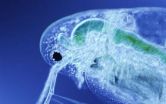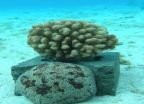(Press-News.org) The deposition of amyloid beta in the brain of individuals with Alzheimer's disease is the focus of much research into both its cause and treatment.
While there may not be a consensus as to whether the deposition contributes to the disease or is a consequence of the disease, there is agreement that it is not favoured thermodynamically, meaning that something else is promoting the process.
Other proteins are often co-deposited in vivo with amyloid beta and one such protein is serum amyloid P component (or SAP). Recent evidence has suggested that SAP is elevated in Alzheimer's disease and a team of researchers from Keele University in Staffordshire, UK, led by Professor Chris Exley, has shown that physiologically-significant concentrations of SAP promote the deposition of amyloid beta under conditions approaching those found in vivo.
Professor Exley said: "We have shown that SAP is bound by fibrils of amyloid beta and that this interaction stabilises the fibrils over timescales which are physiologically significant. This is the first example of a physiologically significant biomolecule promoting and stabilising the formation of amyloid fibrils of amyloid beta 42 under near-physiological conditions."
The group also found that this property of SAP was enhanced in the presence of aluminium, a metal which has also been shown to be co-deposited with amyloid beta in Alzheimer's disease. There have been recent efforts to reduce the plasma concentration of SAP as a therapy for Alzheimer's disease and the research provides strong evidence that SAP is involved in the deposition of amyloid beta 42 in Alzheimer's disease and that by reducing the plasma concentration of SAP it might also reduce the deposition of amyloid beta. Their observations support serum amyloid P component as a therapeutic target in Alzheimer's disease.
### END
Amyloid beta in the brain of individuals with Alzheimer's disease
2012-04-02
ELSE PRESS RELEASES FROM THIS DATE:
Tales from the crypt lead researchers to cancer discovery
2012-04-02
HUNTSVILLE, Ala – Tales from the crypt are supposed to be scary, but new research from Vanderbilt University, the HudsonAlpha Institute for Biotechnology and colleagues shows that crypts can be places of renewal too: intestinal crypts, that is. Intestinal crypts are small areas of the intestine where new cells are formed to continuously renew the digestive tract. By focusing on one protein expressed in our intestines called Lrig1, the researchers have identified a special population of intestinal stem cells that respond to damage and help to prevent cancer.
The research, ...
Newly discovered foot points to a new kid on the hominin block
2012-04-02
It seems that "Lucy" was not the only hominin on the block in northern Africa about 3 million years ago.
A team of researchers that included Johns Hopkins University geologist Naomi Levin has announced the discovery of a partial foot skeleton with characteristics (such as an opposable big toe bone) that don't match those of Lucy, the human ancestor (or hominin) known to inhabit that region and considered by many to be the ancestor of all modern humans.
The discovery is important because it provides first-ever evidence that at least two pre-human ancestors lived between ...
US stockpile security and international monitoring capabilities strengthened, says new report on technical issues behind the comprehensive nuclear test ban treaty
2012-04-02
WASHINGTON — The United States is now in a better position than at any time in the past to maintain a safe and effective nuclear weapons stockpile without testing and to monitor clandestine nuclear testing abroad, says a new report from the National Research Council. The report, requested by the Office of the Vice President and the White House Office of Science and Technology Policy, reviews and updates a 2002 study that examined the technical concerns raised about the Comprehensive Nuclear Test Ban Treaty (CTBT). The report does not take a position on whether the U.S. ...
Planet under Pressure conference, London: Final statement
2012-04-02
Scientists issued the first "State of the Planet" declaration at a major gathering of experts on global environmental and social issues in advance of the major UN Summit Rio+20 in June.
The declaration opens: "Research now demonstrates that the continued functioning of the Earth system as it has supported the well-being of human civilization in recent centuries is at risk." It states that consensus is growing that we have driven the planet into a new epoch, the Anthropocene, where many planetary-scale processes are dominated by human activities. It concludes society ...
Evolving to fight epidemics: Weakness can be an advantage
2012-04-02
When battling a deadly parasite epidemic, less resistance can sometimes be better than more, a new study suggests.
A freshwater zooplankton species known as Daphnia dentifera endures periodic epidemics of a virulent yeast parasite that can infect more than 60 percent of the Daphnia population.
During these epidemics, the Daphnia population evolves quickly, balancing infection resistance and reproduction.
A new study reveals that the number of vertebrate predators in the water and the amount of food available for Daphnia to eat influence the size of the epidemics and ...
Lung cancers detected by CT screening grow as fast as those found with traditional methods
2012-04-02
A new study led by researchers at Mount Sinai School of Medicine indicates that CT scans are more effective than traditional lung cancer detection methods at identifying aggressive lung cancers in their most treatable stages. The data, published online March 27 in the journal Radiology, demonstrate that lung cancers found through annual CT screening are similar to those found in routine practice, both in terms of tumor growth rates and cell-type distribution. In fact, the report showed that 79 percent of the cases diagnosed through annual repeat CT scans were detected at ...
Penn biologists identify a key enzyme involved in protecting nerves from degeneration
2012-04-02
PHILADELPHIA –- A new animal model of nerve injury has brought to light a critical role of an enzyme called Nmnat in nerve fiber maintenance and neuroprotection. Understanding biological pathways involved in maintaining healthy nerves and clearing away damaged ones may offer scientists targets for drugs to mitigate neurodegenerative diseases such as Huntington's and Parkinson's, as well as aid in situations of acute nerve damage, such as spinal cord injury.
University of Pennsylvanian biologists developed the model in the adult fruit fly, Drosophila melanogaster.
"We ...
NIH study finds women spend longer in labor now than 50 years ago
2012-04-02
Women take longer to give birth today than did women 50 years ago, according to an analysis of nearly 140,000 deliveries conducted by researchers at the National Institutes of Health. The researchers could not identify all of the factors that accounted for the increase, but concluded that the change is likely due to changes in delivery room practice.
The study authors called for further research to determine whether modern delivery practices are contributing to the increase in labor duration.
The researchers compared data on deliveries in the early 1960s to data gathered ...
Preventing home invasions means fighting side-by-side for coral-dwelling crabs and shrimp
2012-04-02
As any comic book lover knows, when superheroes band together the bad guys fall harder. The strength that comes in numbers is greater than the sum of its parts.
The same holds true, researchers have recently learned, when different species of crabs (genus Trapezia) and snapping shrimp (Alepheus lottini) in the central Pacific band together to defend their coral homes from hungry seastars. In these frequent conflicts "one-plus-one doesn't always equal two, sometime it is more," explains Seabird McKeon, a marine biologist at the National Museum of Natural History's Smithsonian ...
Study supports using virtual environment to teach mind/body techniques
2012-04-02
A small study from Massachusetts General Hospital (MGH) researchers found that online virtual communities may be an effective way to train patients in meditation and other mind/body techniques. The ability to learn and practice approaches that elicit the relaxation response – a state of deep rest that has been shown to alleviate stress-related symptoms – in a virtual environment could help surmount several barriers that can restrict participation.
"Our finding that a medical intervention – in this case teaching a mind/body approach that includes the relaxation response ...


